Advertisements
Chapters
2: The industrial Revolution and the Rise of Imperialism
3: The Age of Revolution
4: The American Civil War
5: Decline of the Mughal Empire
6: Rise of Independent Regional Powers
7: Rise of British Power in Bengal
8: Expansion of British Power in India
9: British Policies and Their Impacts
10: The Revolt of 1857
11: Indian Renaissance — Social and Religious Reformers in India
12: Rise of Indian Nationalism
13: The Indian National Movement (1885-1916)
▶ 14: The Indian National Movement (1917-1934)
15: The Indian National Movement (1935-47)
16: The Union Legislature
17: The Union Executive
18: The Judiciary
19: The United Nations
20: Specialized Agencies of the UN
![Oxford University Press solutions for The Trail History and Civics [English] Class 8 chapter 14 - The Indian National Movement (1917-1934) Oxford University Press solutions for The Trail History and Civics [English] Class 8 chapter 14 - The Indian National Movement (1917-1934) - Shaalaa.com](/images/the-trail-history-and-civics-english-class-8_6:d8ff79086a7f4371ad2d25755229c0fa.jpg)
Advertisements
Solutions for Chapter 14: The Indian National Movement (1917-1934)
Below listed, you can find solutions for Chapter 14 of CISCE Oxford University Press for The Trail History and Civics [English] Class 8.
Oxford University Press solutions for The Trail History and Civics [English] Class 8 14 The Indian National Movement (1917-1934) Fill in the blanks
Fill in the blank:
Gandhi spent about 22 years in _____________ as a practicing lawyer.
Fill in the blank:
Under __________ leadership, the Indian national movement was transformed into a mass movement
Fill in the blanks:
To protest against the arrest of their leaders, a public meeting was held at ___________ in Amritsar in the year _______.
Fill in the blank:
After the British brutalities in Amritsar, Gandhiji declared that it would be a sin to co-operate with the __________ government.
Fill in the blanks:
At the _________ session of the Congress in 1929, ____________ was declared as its goal.
Oxford University Press solutions for The Trail History and Civics [English] Class 8 14 The Indian National Movement (1917-1934) Match the Columns
Match the Following:
| A | B |
| 1 Gandhiji | (a) Symbol of swadeshi |
| 2 Charkha | (b) Boycott of British goods |
| 3 Jallianwala Bagh | (c) Salt Satyagraha |
| 4 Dandi March | (d) 13 April 1919 |
| 5 Non-Cooperation Movement | (e) Truth and non-violence |
Oxford University Press solutions for The Trail History and Civics [English] Class 8 14 The Indian National Movement (1917-1934) Choose the correct answer
Choose the correct answer:
Gandhiji studied law in __________.
England
South Africa
France
Choose the correct answer:
Gandhiji organized a workers strike against the exploitative Indian mill owners in ___________.
Ahmedabad
Kheda
Champaran
Choose the correct answer:
The Non-Cooperation Movement was launched by Gandhiji in ___________.
1920
1930
1940
Choose the correct answer:
A resolution declaring ‘Poorns Swaraj was declared as its goal at the _____________ session of the Congress
Lahore
Surat
Bombay
Choose the correct answer:
The _____________ was started with the Salt Satyagraha in 1930.
The Non-Cooperation Movement
Civil Disobedience Movement
Quit India Movement
Oxford University Press solutions for The Trail History and Civics [English] Class 8 14 The Indian National Movement (1917-1934) True or False
State whether the following is true or false:
Gandhiji did not have faith in the capacity of the common masses.
True
False
State whether the following is true or false:
In 1919, General Dyer had issued an order banning all public meetings.
True
False
State whether the following is true or false:
The Non-Cooperation Movement had ended in failure after the Chauri Chaura incident
True
False
State whether the following is true or false:
Independence Day was celebrated on 26 January in 1930.
True
False
State whether the following is true or false:
Sarojini Naidu was one of the leaders of the Civil disobedience Movement.
True
False
Oxford University Press solutions for The Trail History and Civics [English] Class 8 14 The Indian National Movement (1917-1934) Answer the questions in one or two words/ sentences
What technique of resistance did Gandhiji evolve in South Africa? What was its basic principle?
Why did Gandhiji lead campaigns in Champaran?
Why did Gandhiji lead campaigns in Kheda?
Which incident marked the end of the Non-Cooperation Movement and when?
Under whose leadership was the Lahore session of the Congress held in 1929? What resolution was passed in this session?
What do you understand by the Civil Disobedience Movement?
Oxford University Press solutions for The Trail History and Civics [English] Class 8 14 The Indian National Movement (1917-1934) Answer the questions briefly
With reference to Gandhiji, discuss his views on the following issue:
Truth and non-violence.
Answer the following question briefly
With reference to Gandhiji, discuss his views on the following issues: Hindu-Muslim unity
Answer the following question briefly
With reference to Gandhiji, discuss his views on the following issues: Social justice
Answer the following question briefly
In the context of the Jallianwala Bagh tragedy, answer the following:
Why was a public meeting held in Jallianwala Bagh on 13 April 1919?
Answer the following question briefly
In the context of the Jallianwala Bagh tragedy, answer the following:
Why did the troops open fire on the gathering? What happened as a result of the shooting?
Answer the following question briefly
In the context of the Jallianwala Bagh tragedy, answer the following:
How did the entire nation and Gandhiji react to the events in Amritsar?
Answer the following question briefly
In the context of the Non-Cooperation Movement, answer the following questions:
Discuss the programme of the Non-Cooperation Movement.
Answer the following question briefly
In the context of the Non-Cooperation Movement, answer the following questions:
Why did Gandhiji abruptly suspend the Non-Cooperation Movement?
Answer the following question briefly
In the context of the Non-Cooperation Movement, answer the following questions:
State the significance of the Non-Cooperation Movement.
Answer the following question briefly
In the context of the Civil Disobedience Movement, answer the following:
Give an account of the Salt Satyagraha.
Answer the following question briefly
In the context of the Civil Disobedience Movement, answer the following:
How did the government react to the movement?
In the context of the Civil Disobedience Movement, answer the following:
What impact did the Civil Disobedience Movement (1930-34) have on the nation?
Oxford University Press solutions for The Trail History and Civics [English] Class 8 14 The Indian National Movement (1917-1934) Picture study
This is the picture of an Indian leader who was known as the ‘Father of the Nation’,
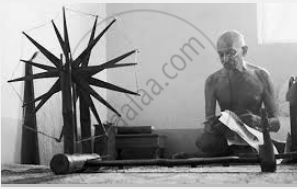
Identify the person.
This is the picture of an Indian leader who was known as the ‘Father of the Nation’,
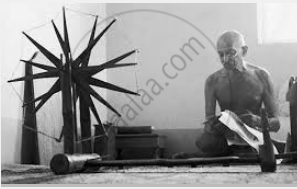
What method did Mahatma Gandhi use in the Indian struggle for freedom?
This is the picture of an Indian leader who was known as the ‘Father of the Nation’,
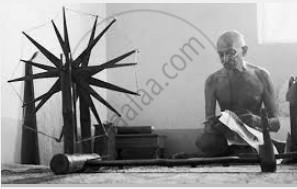
What are the principles on which Mahatma Gandhi's method is based?
This is the picture of an Indian leader who was known as the ‘Father of the Nation’,
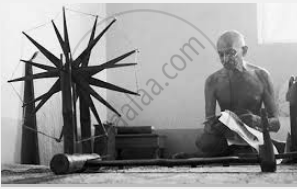
Why is Mahatma Gandhi called the leader of the masses?
This is the picture of an Indian leader who was known as the ‘Father of the Nation’,
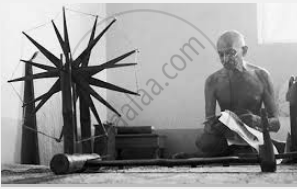
Mention the features of his non-violent struggle against the British.
Solutions for 14: The Indian National Movement (1917-1934)
![Oxford University Press solutions for The Trail History and Civics [English] Class 8 chapter 14 - The Indian National Movement (1917-1934) Oxford University Press solutions for The Trail History and Civics [English] Class 8 chapter 14 - The Indian National Movement (1917-1934) - Shaalaa.com](/images/the-trail-history-and-civics-english-class-8_6:d8ff79086a7f4371ad2d25755229c0fa.jpg)
Oxford University Press solutions for The Trail History and Civics [English] Class 8 chapter 14 - The Indian National Movement (1917-1934)
Shaalaa.com has the CISCE Mathematics The Trail History and Civics [English] Class 8 CISCE solutions in a manner that help students grasp basic concepts better and faster. The detailed, step-by-step solutions will help you understand the concepts better and clarify any confusion. Oxford University Press solutions for Mathematics The Trail History and Civics [English] Class 8 CISCE 14 (The Indian National Movement (1917-1934)) include all questions with answers and detailed explanations. This will clear students' doubts about questions and improve their application skills while preparing for board exams.
Further, we at Shaalaa.com provide such solutions so students can prepare for written exams. Oxford University Press textbook solutions can be a core help for self-study and provide excellent self-help guidance for students.
Concepts covered in The Trail History and Civics [English] Class 8 chapter 14 The Indian National Movement (1917-1934) are India’s Struggle for Freedom, Rise of Nationalism, Early Political Associations, Home Rule Movement, Gandhian Era (1917 – 1947), Early Campaigns, Mass Movements, Civil Disobedience Movement, Formation of the Indian National Congress.
Using Oxford University Press The Trail History and Civics [English] Class 8 solutions The Indian National Movement (1917-1934) exercise by students is an easy way to prepare for the exams, as they involve solutions arranged chapter-wise and also page-wise. The questions involved in Oxford University Press Solutions are essential questions that can be asked in the final exam. Maximum CISCE The Trail History and Civics [English] Class 8 students prefer Oxford University Press Textbook Solutions to score more in exams.
Get the free view of Chapter 14, The Indian National Movement (1917-1934) The Trail History and Civics [English] Class 8 additional questions for Mathematics The Trail History and Civics [English] Class 8 CISCE, and you can use Shaalaa.com to keep it handy for your exam preparation.
